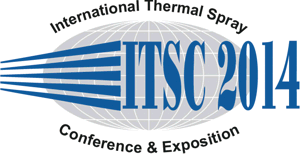| Abstract: |
Plasma-sprayed (APS) Al2O3-coatings with various content of TiO2 are considered to be state-of-the-art in thermal spray industries for electrical insulation. In this paper, coatings deposited by conventional plasma spraying (F6) where compared to those produced by 1-cathode-3-anode plasma spraying technique (DeltaGun). Further, high velocity oxy-fuel (HVOF) sprayed coatings were deposited for comparison. Commercial (Al2O3-13Ma. %TiO2 and Al2O3-40Ma.%TiO2) and experimental (Al2O3-44Ma.%TiO2, which corresponds to the composition of the compound aluminium titanate, Al2TiO5) powders were used in this study. The different spray techniques were compared regarding their particle velocities and temperatures at varying spray parameters. Also, deposition rate and efficiency were measured. Regarding the coating properties, microstructure, phase composition, mass loss by cavitation, hardness, Young's modulus and electrical resistivity were investigated. It was shown that both mechanical and electrical coating properties prepared by the 3-anode technique are comparable those prepared by the conventional plasma spray technique. . However, higher deposition rates were achieved at comparable deposition efficiency by the modern spray equipment, which results in considerably lower production times and costs especially for larger components. HVOF-coatings showed finer microstructures, lower cavitation wear and higher resistivity but much lower deposition efficiency compared to plasma spraying. Moreover, coatings of high Al2TiO5-content were deposited by APS, which exhibited lower cavitation wear rates and lower resistivity compared to coatings containing less Al2TiO5.
|
|
